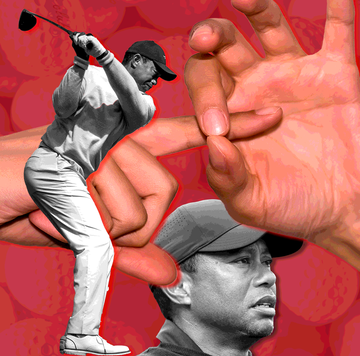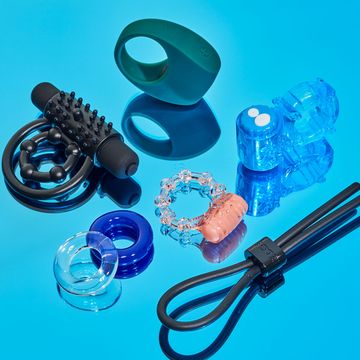A heterosexual couple once came to me complaining of mismatched desire. They’d been married for three years. The wife claimed that she was “suffering from low desire” and was generally too tired for sex. Her partner was very frustrated, as he felt rejected and hurt by her lack of interest in intimacy and was growing more resentful. They asked me for help.
The first question I asked was: Have you heard of spontaneous and responsive desire?
The scenario above is one I often see in-clinic when working with couples. Many people in relationships need different ingredients to create desire. Learning which kind of desire you lean toward, and which your partner leans toward, can be a big first step in creating a sex life that works for both of you.
To break down the science of desire, it’s critical to understand spontaneous and responsive (or receptive) desire, the two big ways people’s minds and bodies create the craving for gettin’ it on.
In simpler terms coined by Dr. Patricia Love, you can think of it as having either a sexy-body or a sexy-mind. A sexy-bodied person is someone who walks around with a “sex-ready” body, meaning you’re easily aroused, think about sex often, and often use sex to relieve stress. In sum: If you’re in your body, desire can manifest. A sexy-minded person is someone who needs the context of a sexual experience/interaction to become fully aroused. They need a calm mind and to be free from stress. Sex is kind of like a treat that comes out of the right circumstances. In sum: if you’re in the right headspace, desire can manifest.
People usually (but not always) experience one type of desire more frequently.
Desire is one of the most “mysterious of all human experiences,” says Jordan Dixon, a clinical sex and relationships psychotherapist. Understanding how complex it is through the lens of these two models can lead to more fulfilling sexual experiences.
“From this knowledge, you can take practical action steps, rather than spending years in therapy trying to process your feelings,” says Lucy Rowett, a certified sex coach and clinical sexologist.
Let's dig deeper into what spontaneous and responsive desire mean.
Spontaneous desire (the sexy-body person) is the desire many of know from from experience: It’s horniness. “We may have those random sexy thoughts and just want it,” Dixon says. “It just appears out of the blue. For those experiencing it in sexual relationships, it's that feeling where they can't keep their hands off one another.”
This type of desire often starts to fade over time as our bodies begin to regulate the feel-good hormones produced by New Relationship Energy. This fading isn’t necessarily a bad thing, because recognizing it can help us utilize responsive, or receptive desire.
Responsive or receptive desire (the sexy-mind person) “goes beyond the biological feelings of desire (horniness) and takes into account relational, social, cultural and contextual aspects of desire,” says Laurie Mintz, Ph.D., a licensed psychologist, certified sex therapist, and author of Becoming Cliterate.
In order to understand this type of desire, it helps to understand the bio-psycho-social viewpoint of human sexuality. This basically breaks down to the unsexy, but very true idea that desire doesn’t necessarily bubble up out of nowhere. It is a complex response that comes from biological, psychological, and social factors: hence the bio-psycho-social (BPS) model.
The psychological aspect of the BPS trio refers to our mental state, which often changes depending on a variety of factors, including stress level and sleep. The biological portion is the body’s response to sexual stimuli, which is the fancy way of saying "when your dick gets hard." The social aspect refers to the messaging you have around sex, your relationship with yourself and/or partner(s), the current sexual situation you’re in, and all the other ways we relate to other people in a sexual sense.
People who experience responsive desire may have a lot of spontaneous desire in the beginning of a relationship, then return to their base level of receptiveness as the relationship settles.
How can you tap into responsive desire?
Put intimate time on the calendar. This isn’t necessarily sex; it can be time spent together, making out, or just cuddling. The creation of intimacy can lead to the right relaxed circumstances for desire. It’s about being receptive to desire in your mind in order to give it roots to grow in your body.
Knowing about spontaneous and responsive desire can thus begin to solve this problem of desire discrepancy, as it “would reverse the equation, [wherein you] have sex to get horny rather than waiting to be horny to have sex,” Mintz says. “In fact, this is an empirically supported and effective sex therapy technique for women and couples struggling with low-sex and diminished spontaneous desire.” As contradictory as it may sound, you can schedule “spontaneous” sex in a planned way.
This may sound kind of unsexy, but it’s really not. When you have a regular “naked cuddle time” on the cal—feel free to call it whatever works for you—you can start to create anticipation for what’s to come. You can send sexy texts during the day, engage in fantasy, and begin to get excited. All of us feel desire in different ways, so the best we can do is nurture it in one another and communicate our needs.














